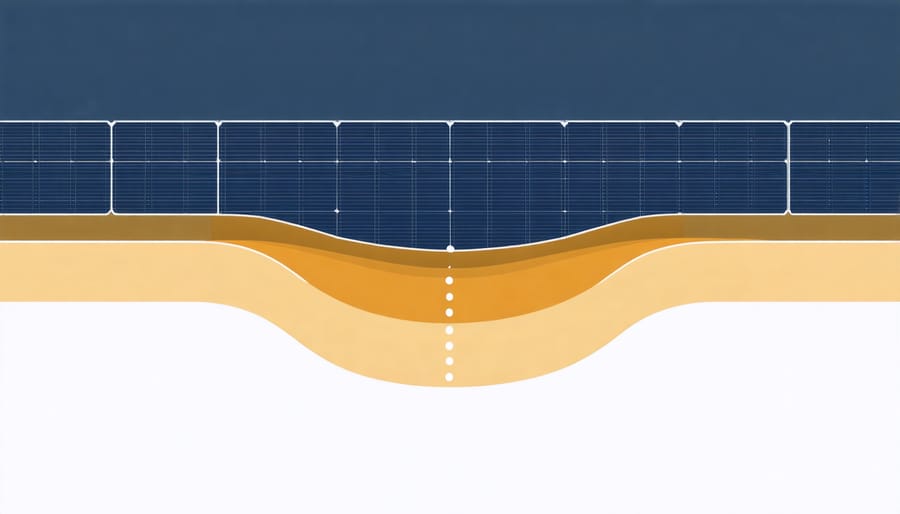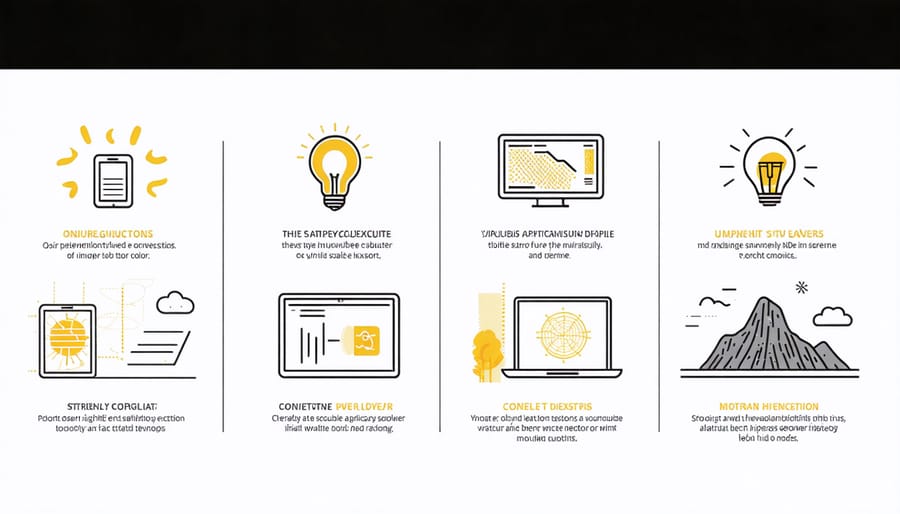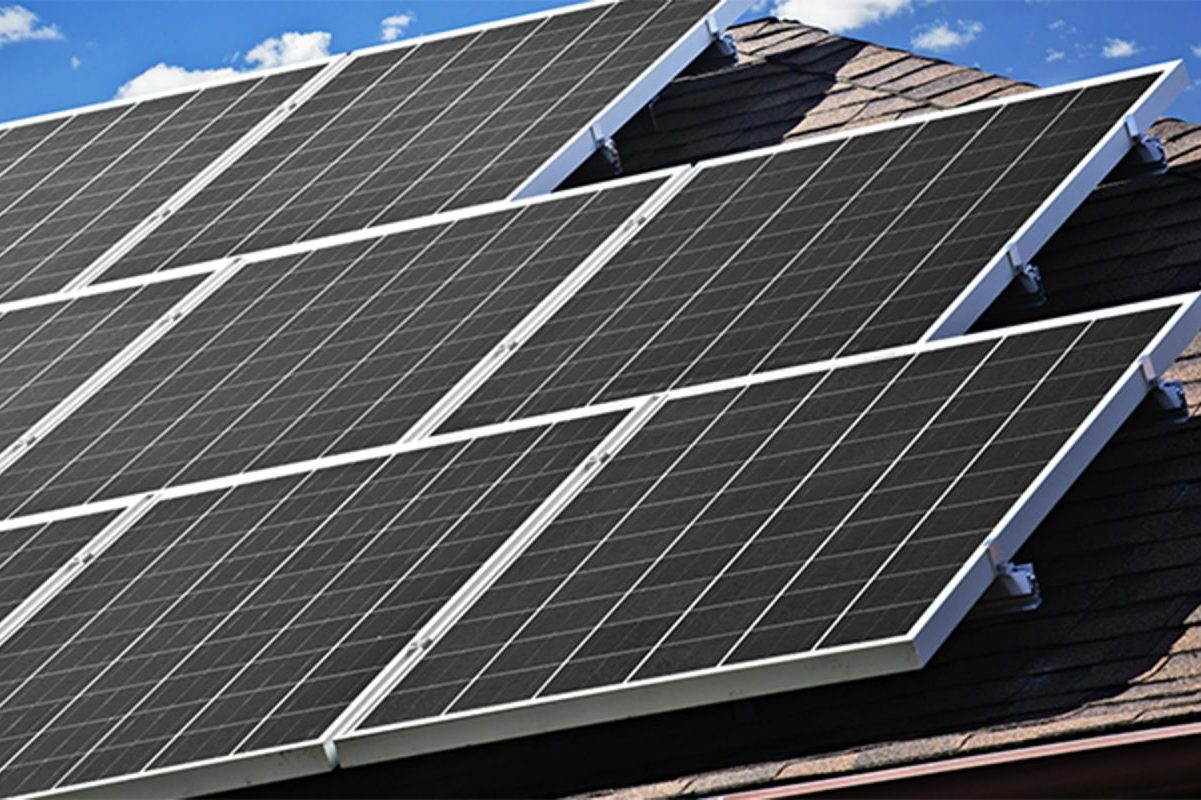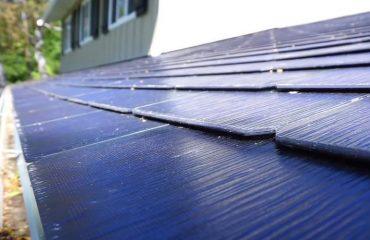Imagine powering your smartphone, smartwatch, or even your jacket with nothing but sunlight. Wearable solar panels are revolutionizing how we think about personal energy generation, seamlessly integrating renewable power into our daily lives. These flexible, lightweight photovoltaic cells can be woven into fabrics or attached to accessories, transforming everyday clothing into personal power stations.
Unlike traditional rigid solar panels, these innovative devices conform to the human body while harvesting solar energy on the go. From solar-powered backpacks charging laptops during commutes to athletic wear that keeps fitness trackers running through marathon training sessions, wearable solar technology is bridging the gap between sustainable energy and practical fashion.
As climate consciousness grows and portable device usage continues to surge, wearable solar panels represent more than just a technological breakthrough – they’re a glimpse into a future where personal energy independence and environmental responsibility become part of our everyday wardrobe. This emerging technology promises to reshape not just how we power our devices, but how we interact with renewable energy in our daily lives.
How Wearable Solar Panels Actually Work
The Science Behind Flexible Solar Cells
Flexible solar cells represent a groundbreaking advancement in smart solar power solutions, made possible through thin-film technology. Unlike traditional rigid panels, these cells are created by depositing ultra-thin layers of photovoltaic material onto flexible substrates like plastic or metal foil. This innovative process results in solar cells that are incredibly lightweight and can bend without losing functionality.
The secret lies in using materials like amorphous silicon, CIGS (Copper Indium Gallium Selenide), or organic photovoltaics, which can be applied in layers just a few micrometers thick. While these flexible cells typically have lower efficiency rates than conventional panels, their versatility and adaptability make them ideal for wearable applications.
What makes this technology particularly exciting is its ability to conform to various shapes and surfaces. The cells can be integrated into fabrics, curved surfaces, and even transparent materials, opening up countless possibilities for everyday use. This flexibility, combined with their durability and lightweight nature, makes them perfect for portable and wearable applications while maintaining their ability to harness solar energy effectively.

From Panels to Fashion: Smart Integration
The integration of solar technology into fashion has evolved dramatically, moving beyond simple attachments to become seamlessly woven into everyday garments. Designers are now incorporating flexible solar cells directly into fabric weaves, creating clothing that’s both functional and stylish. These innovative textiles capture solar energy while maintaining the comfort and flexibility of traditional materials.
From jackets with built-in charging capabilities to bags featuring solar-powered phone chargers, manufacturers are finding creative ways to blend technology with fashion. Solar cells are being integrated into accessories like hats with cooling fans and backpacks with LED lighting systems. Even formal wear hasn’t been left behind, with solar-powered evening dresses that can light up or charge mobile devices making appearances on runways.
The key to this integration lies in the development of ultra-thin, flexible solar cells that can withstand movement, washing, and daily wear. These cells are often protected by waterproof coatings and connected through conductive threads that carry power to small batteries or directly to devices, making solar-powered fashion both practical and durable for everyday use.
Popular Wearable Solar Products Today
Solar-Powered Backpacks and Bags
Solar-powered backpacks and bags represent one of the most practical applications of wearable solar technology. Leading brands like Voltaic Systems and BirkSun offer backpacks equipped with lightweight solar panels that can generate between 5 and 10 watts of power, enough to charge smartphones, tablets, and other small devices while you’re on the move.
These bags typically feature waterproof panels integrated into their exterior, connected to a built-in battery pack that stores energy for later use. Most models can fully charge a smartphone in 2-4 hours of direct sunlight, while power banks can store enough energy to charge your device multiple times.
Popular options include the Voltaic Systems Array, which generates 10 watts and includes a 19,800mAh battery, capable of charging laptops. For everyday use, the BirkSun Atlas provides 5 watts of power and includes a 4,000mAh battery, perfect for keeping your phone charged during commutes or outdoor activities.
The solar panels on these bags are typically flexible and durable, designed to withstand daily wear and tear. Most models come with multiple charging ports and adapters compatible with various devices, making them versatile solutions for eco-conscious travelers and outdoor enthusiasts.

Solar-Integrated Clothing
The integration of solar technology into everyday clothing has made significant strides in recent years. Leading outdoor brands now offer jackets, backpacks, and caps with flexible solar panels seamlessly woven into their fabric. These garments can charge your mobile devices while you’re on the move, offering a practical solution for outdoor enthusiasts and urban commuters alike.
Popular options include the Tommy Hilfiger solar jacket, which features removable solar panels that can power your smartphone or tablet. Similarly, the BauBax solar-powered windbreaker comes equipped with ultra-thin panels that can generate enough power to charge small devices throughout the day. For athletes and hikers, companies like Lumos offer running gear with integrated solar strips that power LED safety lights and can charge wireless earbuds.
The technology isn’t limited to outerwear. Solar-integrated caps and visors are becoming increasingly popular, particularly for outdoor workers and sports enthusiasts. These accessories typically feature small panels on the brim that can power built-in lighting or charge small devices via USB ports.
While current solar clothing options may seem limited, manufacturers are continuously developing new products that combine style with functionality, making solar-powered fashion both practical and aesthetically pleasing.
Real Benefits for Everyday Users
On-the-Go Power Freedom
Imagine never having to worry about finding a power outlet during your outdoor adventures or daily commute. Wearable solar panels are revolutionizing how we stay connected by transforming our clothing and accessories into personal power stations. These innovative devices free us from the constant hunt for wall outlets and the anxiety of dying devices.
By integrating lightweight, flexible solar cells into everyday items like backpacks, jackets, and hats, wearable solar technology allows you to generate clean energy wherever your day takes you. A typical solar-equipped backpack can charge a smartphone in about 2-3 hours of sunlight, while larger panels incorporated into jackets can power multiple devices simultaneously.
The freedom this technology provides is particularly valuable for hikers, commuters, and urban professionals who need reliable power throughout their day. Whether you’re tracking your route on a mountain trail, catching up on work in the park, or simply want the peace of mind of having backup power, wearable solar panels ensure you’re never left searching for an outlet.
Beyond personal convenience, this technology represents a shift toward energy independence in our daily lives. By harnessing the sun’s power through our clothing and accessories, we reduce our reliance on traditional power grids while contributing to a more sustainable future. The ability to generate clean energy on the go isn’t just convenient – it’s a step toward a more energy-independent lifestyle.
Environmental Impact and Cost Savings
The adoption of wearable solar panels represents a significant step toward reducing our carbon footprint while offering substantial cost benefits. These innovative devices can help users save money on energy costs by harnessing free solar energy throughout the day, effectively reducing dependency on grid electricity.
A typical wearable solar panel system can offset approximately 2-3 kilowatt-hours of energy consumption per month, translating to annual savings of $30-50 on electricity bills. While this might seem modest, the cumulative impact becomes significant when considering the growing adoption of these devices across communities.
From an environmental perspective, each wearable solar panel can prevent roughly 50-75 pounds of carbon dioxide emissions annually. This reduction is equivalent to planting one tree or driving 60 fewer miles in a standard gasoline-powered vehicle. As the technology becomes more efficient and widespread, these environmental benefits will continue to multiply.
The initial investment in wearable solar technology typically pays for itself within 18-24 months through reduced energy costs. Additionally, many regions offer tax incentives and rebates for adopting solar technology, making the financial proposition even more attractive. When combined with other sustainable practices, wearable solar panels become an integral part of a comprehensive approach to both environmental stewardship and financial savings.

The Future of Wearable Solar Technology
The future of wearable solar technology is bright, with researchers and manufacturers pushing the boundaries of what’s possible. New developments in flexible solar cells and energy-storing textiles are paving the way for more efficient and stylish wearable solar solutions. Scientists are currently working on solar fabrics that can be woven directly into clothing, eliminating the need for separate panels or attachments.
One of the most promising innovations is the development of transparent solar cells, which could transform everyday eyewear and window surfaces into power-generating devices. These advancements, combined with solar-powered transportation innovations, are creating a more integrated approach to personal energy generation.
Emerging technologies like solar ink and paint could revolutionize how we incorporate solar power into our daily lives. Imagine backpacks, jackets, and even umbrellas that can seamlessly harvest solar energy while maintaining their original appearance and functionality. Additionally, improvements in battery technology and energy storage systems will make these devices more practical for everyday use.
The integration of smart technology with wearable solar panels is another exciting frontier. Future products may include AI-powered energy management systems that automatically optimize power collection and usage based on your activities and weather conditions. These developments promise to make wearable solar technology more efficient, accessible, and fashionable than ever before.
Wearable solar technology represents a significant step forward in personal energy independence, offering an innovative way to harness renewable energy while on the move. As the technology continues to advance, we can expect to see more efficient, flexible, and aesthetically pleasing solar-integrated clothing and accessories entering the market. These developments not only promise to reduce our reliance on traditional power sources but also demonstrate how sustainable energy solutions can seamlessly integrate into our daily lives. With increasing affordability and improved designs, wearable solar panels are poised to transform how we think about personal energy generation, making it possible for individuals to power their devices sustainably wherever they go. As we move toward a more energy-conscious future, wearable solar technology stands as a practical solution that combines environmental responsibility with personal convenience.








